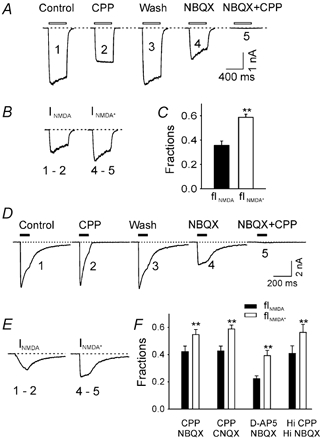Figure 4. The amplitude of NMDAR current in isolated CA1 pyramidal cells is larger when AMPARs are blocked.

A, currents (VH = −60 mV) from an isolated CA1 hippocampal cell induced by a brief pulse (400 ms) of a mixture of kainate (200 μM) and NMDA (50 μM, open bars): 1, under control conditions; 2, in the presence of 25 μM CPP; 3, after wash-out of CPP; 4, in the presence of 5 μM NBQX; 5, in the presence of NBQX + CPP. B, CPP-sensitive current in the control condition (INMDA = I1 – I2) and in the presence of NBQX (INMDA* = I4 – I5). C, fraction of total current carried by NMDAR channels in the absence (fINMDA = (I1 – I2) / I1) and presence of NBQX (fINMDA* = (I4 – I5) / I3). fINMDA* is significantly larger than fINMDA. D, currents induced by a brief pulse of l-glutamate (0.5 mm for 100 ms, filled bars) from a single isolated hippocampal neurone during: 1, control conditions; 2, in the presence of 50 μM CPP; 3, wash; 4, in the presence of 10 μM NBQX; 5, in the presence of NBQX + CPP. E, CPP-sensitive current in the control condition (INMDA = I1 – I2) and in the presence of NBQX (INMDA* = I4 – I5). F, fraction of total current carried by NMDAR channels in the absence (fINMDA) and presence of NBQX (fINMDA*). fINMDA* was reliably larger than fINMDA regardless of which antagonist pair was used. The smaller values for fINMDA and fINMDA* observed with the NMDAR antagonist D-AP5 (20 μM) are due to incomplete block of NMDAR current at this D-AP5 concentration. The concentrations of the antagonists used were: CPP (25-50 μM), NBQX (10 μM), CNQX (10 μM), D-AP5 (20 μM). A near-saturating concentration of l-glutamate (3 mm) and higher concentrations of CPP (Hi CPP, 100 μM) and NBQX (Hi NBQX, 20 μM) were used for the last pair of bars.
